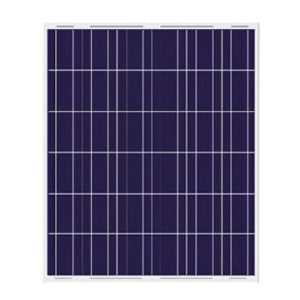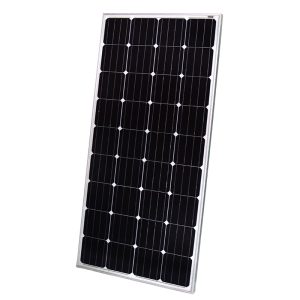As energy costs continue rising across Canada, more homeowners and businesses are looking to solar power to lock in consistent pricing for decades. 500 watt solar panels represent the most powerful residential systems available today, capable of harnessing more of the sun’s energy with fewer overall panels. But are these extra-large panels right for your property?
Overview of 500W Solar Panels
Most home solar panels range from 250 to 400 watts. By comparison, 500 watt solar panels measure nearly 40 by 78 inches in size and can generate up to 30% more power. Under ideal test conditions, a 500W panel can produce 500 watt hours of electricity per hour. Real-world output will be lower depending on weather and seasons, but still higher than standard options.
500W solar panels achieve their increased capacity either through expanded surface area or higher solar cell efficiency. Many utilize 72 larger monocrystalline solar cells compared to 60 for standard models. High-efficiency variants like those from SunPower use advanced cell technology to extract more energy. Peak lab efficiency ratings range from 17.5% to over 21%.
Most major solar manufacturers now offer 500W residential panels, including Canadian Solar, Yingli, Risen Energy, and others. Quality and durability meet the same certification standards as smaller panels, though snow/wind load tolerances are often higher given their size and mass. Temperature coefficients and long-term degradation rates remain comparable as well.
Ideal Uses for 500W Solar Panels
The key advantage of 500 watt solar panels is the ability to hit a system’s target size with fewer overall panels. This streamlines installs and lowers soft costs. But their larger dimensions also introduce challenges, especially for residential rooftop applications.
Large Home Solar Arrays
Most households can meet their needs with a 5-8 kW system size. By utilizing more powerful 500W panels, this capacity is achieved with just 10 to 16 panels. Fewer pieces speeds overall solar panel installation and makes finding sufficient roof space easier. The higher output per panel also leaves room to expand the system down the road.
Commercial and Industrial Rooftops
The larger surface area of warehouses, factories, office buildings and retail spaces can easily accommodate 500W panels without roof loading issues. Their expanded size helps minimize wasted space between panels. And the lower panel count greatly reduces project complexity and install times.
Ground-Mount Solar Arrays
Purpose-built ground mount systems are the ideal application for 500W solar panels. Land constraints are rarely an issue, so the focus becomes generating maximum clean energy from the space. Higher panel wattages result in a smaller overall footprint and lower mounting costs. Easier access also facilitates necessary maintenance down the road.
Key Specifications and Performance Data
While 500W solar panels come in a range of underlying configurations, their key specifications and performance metrics are quite similar. Understanding these details allows properly evaluating their fit for a given residential or commercial solar project.
Physical Dimensions
- 72-cell panels: Approximately 39″ x 77″ x 2″ (99cm x 196cm x 5cm)
- 96-cell panels: Approximately 41.5” x 62.5” x 2” (105cm x 159cm x 5cm)
Weight
- 72-cell panels typically weigh 60 to 71 lbs (27 to 32 kg)
- 96-cell panel weight ranges from 56 to 63 lbs (25 to 29 kg)
Efficiency Rating
- Most 500W panels fall between 17% and 19% efficiency.
- High-efficiency models can reach over 21% (SunPower, LG, Panasonic)
Temperature Coefficient
- -0.30 to -0.35% per degree Celsius. Similar to standard panels.
Degradation Rate
- 0.5-0.7% annual reduction in output over 25+ year lifespan.
Daily/Yearly Production Estimate
- 500W rating is under ideal test conditions (STC)
- Real-world output about 2 kWh per day or 730 kWh per year
Snow/Wind Load Tolerances
- High-efficiency panels: 5400Pa snow/2400Pa wind
- Standard efficiency panels: 4600Pa snow/1600Pa wind
Warranties
- 10-12 years on materials/workmanship
- 25+ years at 80% of rated power output
Certifications
- IEC 61215, 61730 standards
- UL 1703 certification for North American use
Cost of 500W Solar Panels
One downside to 500 watt solar panels is their higher price point when calculated on the typical “$ per watt” basis. But this metric can be misleading, since total system costs also depend on the number of panels required. In many cases, 500W panels offer the best overall ROI.
500W Solar Panel Cost
- Approximately $1.00 per watt vs $0.75 for standard panels
- Total panel cost around $500 vs $250-375 for 250W-400W
Complete System Cost
- 10 kW system with 400W panels: 16 panels, $12,000 panel cost
- 10 kW system with 500W panels: 12 panels, $12,000 panel cost
The more relevant cost comparison is all-in system pricing. When fewer 500W panels produce the same system size, reduced installation labor and racking materials can make up for their higher per-panel costs. System pricing for a full home installation typically ranges from $15,000 to $25,000 regardless of panel wattage.
Challenges of 500W Solar Panel Installs
While 500 watt solar panels can minimize total system cost in many cases, their expanded size and weight introduces other challenges – especially for residential roof applications. Homeowners should consider the following factors when evaluating 500W panels:
Rooftop Space Limitations
Finding sufficient south-facing roof space for large 500W panels can be difficult, especially on homes with multiple levels or roof geometries. Precise site measurements are required rather than estimates.
Structural Weight Capacity Professional engineering assessments may be required prior to installation to assess if roof structures can handle 500W panel wind, snow and dead load weights. Additional roof reinforcement often proves expensive.
Mounting Considerations
More than 6 attachment points may be required when mounting 500W panels to properly distribute weight and withstand wind pressures. Specialized non-penetrating mounting systems are recommended to avoid roof leaks.
Visual Curb Appeal
The sheer size of 500W panels can impact neighborhood aesthetics, especially on visible street-facing roof planes. Homeowner associations may limit panel dimensions as a result.
Specialized Equipment Needs From reinforced racking systems to heavier-duty cranes/lifting equipment, installing 500W solar panels requires upgrading standard gear to handle their size and mass.
Higher Installation Costs Larger panels typically add $0.25-$0.50 per watt in extra installation labor and structural equipment. The system cost savings can diminish as a result.
In many residential settings, the hassle of large 500W panels outweighs their advantages. Carefully weigh their benefits against ease of installation and overall project cost.
Are 500W Solar Panels Right for You?
For large residential arrays, commercial sites, and ground mounts, 500 watt solar panels can absolutely minimize the panels required to achieve a target system size. This streamlines installations and keeps per-watt pricing competitive with smaller, lower-output modules. Just be sure to thoroughly assess structural capabilities, equipment needs, site layout and roof space limitations first.
But even when higher panel costs and install overheads make 500W systems impractical, homeowners can still benefit from high-efficiency solar panels in the 350-400 watt range. With conversion efficiencies approaching 20% from SunPower, LG, and Panasonic, these panels generate more clean energy per square foot than standard options. Contact Solar Exporters today to evaluate which solar panels make the most sense for your property and budget.



